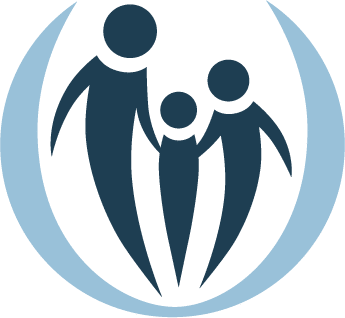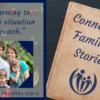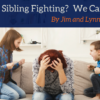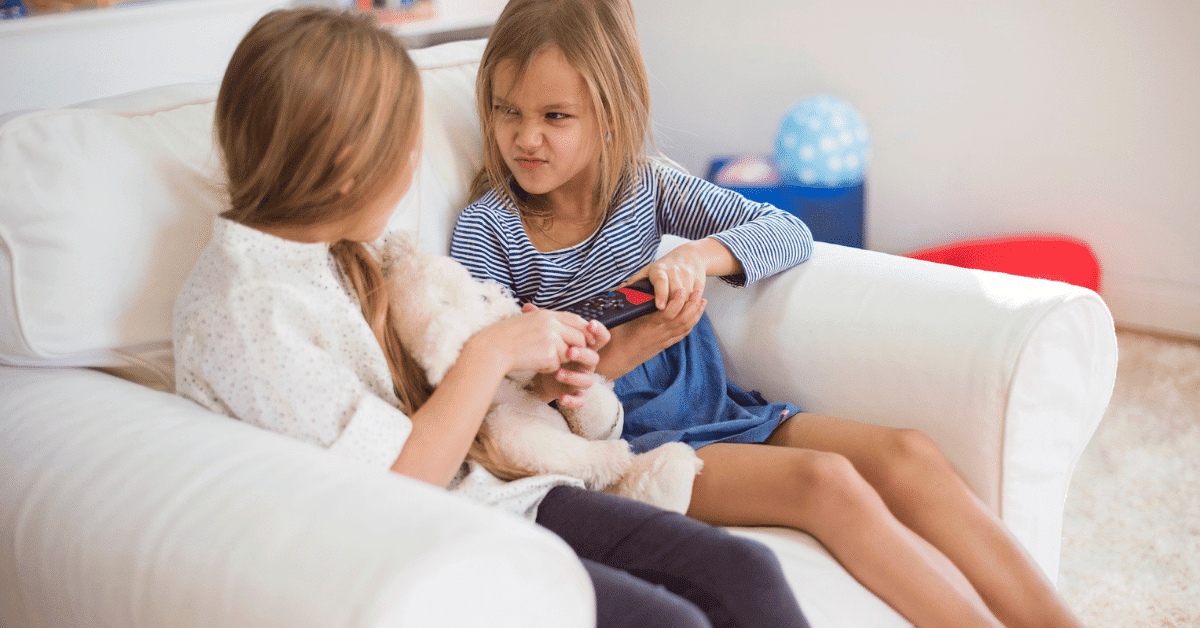
Help! My Kids Are Constantly Fighting
Teaching true reconciliation in your home
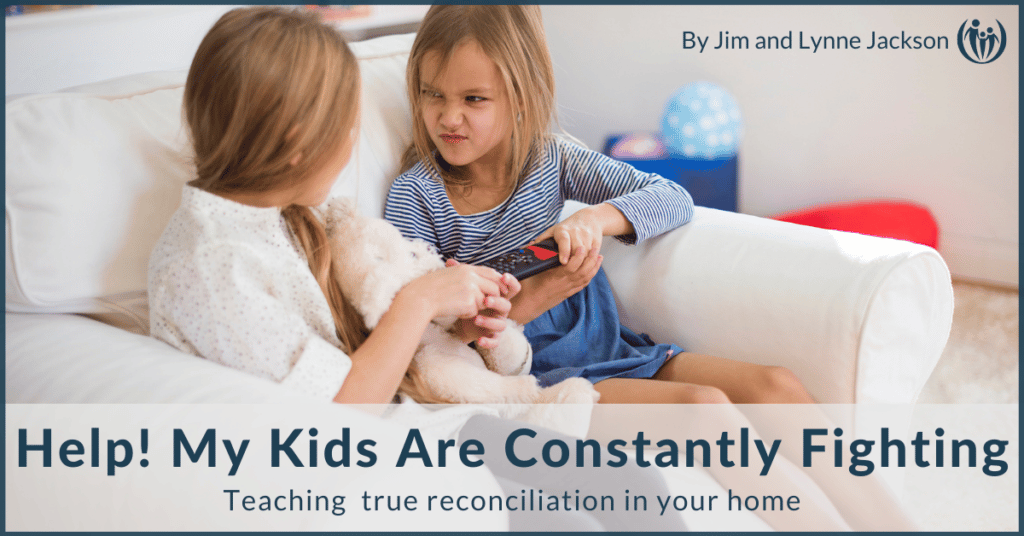
Does it seem like your kids are constantly fighting? Sibling conflict is often a common source of anger and frustration in parenting! It is a tough challenge with such big emotions, especially if you are trying to protect a more vulnerable child. This is why we created our Sibling Conflict online course. We teach something called “The Peace Process”, using four simple steps: Calm, Understand, Solve, Celebrate.
After this podcast on sibling conflict aired, we received an email from Kirsten, a mom of four kids, ages 2-10, who had just signed up for the course:
I am BLOWN AWAY by how beautifully even the basics of the four-step Peace Process have worked! After I took notes on the podcast, within 5 minutes we had an opportunity to test the process. It. Was. Amazing. Seeing my oldest child’s face light up at the end of the process was the greatest reward. Wow. We’ve used The Peace Process again two or three times this morning alone, and it has been incredibly life-giving. I cannot wait to learn more.
Learn the basics of The Peace Process
The Carpenter family was struggling with their three children (Sam-8, Mitch-10, Emma-12) hassling each other frequently. They found The Peace Process significantly affected the overall vibe in their home in a positive way.
Here is their story in their own words:
Step 1: CALM
Guided by The Peace Process, we would first encourage them to calm down by finding their own space for a few minutes or taking a few deep breaths, and then they would determine if they were calm enough to work through their hassle. If not – a few more deep breaths, a stroll around the main floor of our house, a few minutes sitting alone on the couch… anything to get the space they needed to disengage for a minute.
Step 2: UNDERSTAND
Once they were calm, we’d move on to step two of The Peace Process: understanding one another’s perspective. One would say to the other, “Can you tell me how you’re feeling?” And then he’d restate what he heard his brother saying. And then they’d flip roles. “Do you feel understood?” they would ask each other, and if not, they’d ask for more information and try restating again until the answer was “yes” (I feel understood).
Step 3: SOLVE
The third step was coming up with a win-win solution. This step was often challenging for them, and we’d sometimes have to redo steps one and two in the midst of trying to settle step three. But eventually, they’d land somewhere conciliatory and come up with a compromise: “How about you get the ball for five minutes, and then I get it for five minutes?” “How about you read in the living room, and I’ll play my music in the basement?”
Step 4: CELEBRATE
We also did the bonus step of “hugging it out” after the win-win solution was reached. A high five or fist pump was always an alternative.
The words of the reckless pierce like swords, but the tongue of the wise brings healing.
Proverbs 12:18
One family’s experience with The Peace Process
The Peace Process has changed the way our kids handle conflict with one another. We have grown accustomed to hearing one say to the other (without our prompting, no less!), “I’m mad at you. I need to take a few breaths.” Or, “Can you tell me how you’re feeling?” The other day, I could hear my boys fighting in the basement, and I did not intervene. It got quieter down there, and a few minutes later, my youngest son came up.
“Sounds like it was heating up in the basement,” I commented.
He responded, “Yeah, but we did The Peace Process and worked it out.”
This family even helped a child in their neighborhood learn this valuable skill:
Not long ago, we had a neighbor boy, Mitch, over at our home. He spends a lot of time here, and he and my 10-year-old son will often go head-to-head, sometimes even getting physical with each other. After such fights, Mitch will leave screaming, run to his house, and won’t come out.
One day as my boys were going through The Peace Process, Mitch watched in fascination. “What are they doing?” he whispered to me. I explained it to him, and he listened intently as they worked through things.
A few days later, Mitch and Sam started yelling at each other and things escalated quickly. Mitch started to run out of our house as he hollered his anger at Sam.
I stood in his path. “Mitch, let’s go do The Peace Process.”
He had tears streaming down his face and was furious with Sam, and so the first step “calm down” took a while, but after that, he walked through every step. Once they had reached a win-win solution, Mitch said eagerly, “We have to do the last step – hug it out!” Mitch, Sam, and even my other son Henry met in the middle of the room in a three-way hug that ended as a huge, laughing pile.
Now that we have that language and practice shared between the boys, The Peace Process can be employed any time they find themselves at odds with each other, which has made their play times far more enjoyable for all!
(Side note: There is a video in the course of Emma, Sam, and Henry sharing about The Peace Process that kids love to watch.)
We got an update many years after their family learned The Peace Process:
Our kids are now 18, 16, and 14 and Emma just came home from her freshman year of college. Occasionally there was a fight for which we got to dust off our adapted version of The Peace Process and remember what hard work this whole relationship thing can be. But there has been a lot of connecting, silliness, gratitude, and even pulling out the old Lego bin together!
You may have tried to guide your kids toward reconciliation in the past with little success. We have lots more practical help for you in both our book and the online course. But here are three starter principles about how to lead with grace toward true reconciliation.
Three Keys to True Reconciliation
ONE: Stay “one step ahead of your kids”
In other words:
- get yourself calm before you engage
- be the first one to empathize and understand what’s going on in your kids’ hearts
- have some solve ideas in case your kids need them
- and be looking for small things that have gone well so you can affirm and help them celebrate
TWO: Enter with a new goal of grace
This parent’s story says it well: In the past, when my oldest daughter was mean to her siblings I saw her as the enemy and she needed to be controlled. But I’ve been focusing on the truth that everyone has bad days, hard times, and can be mean or harsh. It is not the end of the world and doesn’t mean they are bad, just humans in need of forgiveness and grace. I’m trying to look at what’s behind her behavior, have empathy, and then help them all figure it out.
I’ve switched my goal from shutting down the “meanness” to bringing grace, love, and acceptance. That shift has been HUGE! I feel so much less stressed and am able to see my kids from a new perspective. They have been kinder to each other and have shown more grace too! I think they are all feeling much more “seen” and understood. I know that we will still have ups and downs, but I have seen some real transformation.
I’ve switched my goal from shutting down the “meanness” to bringing grace, love, and acceptance. That shift has been HUGE! I feel so much less stressed and am able to see my kids from a new perspective. They have been kinder to each other and have shown more grace too!
THREE: Stop before kids get frustrated and celebrate anyway
Any helpful parenting tool can become legalistic if implemented in a rigid, “gotta get to the 4th step or we fail” kind of way. When that happens, even an effective tool loses the power of God’s grace and usually backfires. Kids feel controlled and criticized instead of empowered toward learning something valuable. (I love that God holds us accountable to walk in his grace, not manage behavior with clever tricks.)
A mom of three shared how The Peace Process has permeated the culture of her entire family:
“Things went a lot better once I realized – Stop at any point during The Peace Process if kids or parents wear out or get stuck and still celebrate. We have done this pretty well since that realization, and I got confirmation of that tonight. My husband and I were having a heated ‘discussion,’ so we stopped for dinner and I tried again afterward. My oldest daughter came into the room where we were talking and gave us each a chocolate chip in celebration of us trying again nicely. My husband thanked her and she said, “I’m just doing what my mom taught me to do.”
The reason The Peace Process has helped so many families is that it is so full of God’s grace! Don’t settle for quick or controlling “fixes” to sibling conflict. You can lead your kids with grace to reunite hearts and enjoy the sweet fruit of reconciliation, as they build valuable, lifelong skills.
Let’s hear some updated feedback from Kirsten, the mom of four mentioned at the beginning of the article who signed up for the course after listening to the podcast.
The practice of getting calm and slowing down enough to listen and respond respectfully has been so helpful. I did The Peace Process with them a handful of times and they now often talk things out for themselves and come to a solution. (I’m not sure they would even recognize that there are “steps”.) When there’s an especially tense conflict, I have the tools I need ready to go. This is SO helpful and life-giving in the midst of conflicts that can feel totally draining!
What a gift Kirsten has given her kids! We’d love for your family to grow in wisdom and healing in your precious relationships.
The words of the reckless pierce like swords, but the tongue of the wise brings healing. Proverbs 12:18
In our online course Sibling Conflict: From Bickering to Bonding we teach parents how to teach kids The Peace Process. This process equips kids to work through their own arguments without your constant supervision and refereeing. Join us today!

